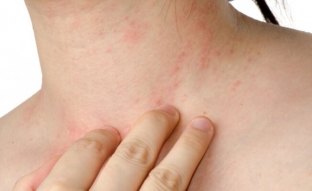Serum sickness is one of the allergic diseases. This condition develops against the background of increased sensitivity of the body to a foreign protein that has entered it from the outside. More often, serum sickness develops on the introduction of a heterologous protein, that is, a protein of other biological species, although the appearance of serum sickness on the introduction of a human (homologous protein) is not excluded.
Sera are introduced into the body to prevent or treat infectious diseases. Today, serum sickness has become less common as the sera administered are highly purified, but hypersensitive organisms still have a high risk of developing serum sickness.
Main clinical manifestations of serum sickness
The severity of clinical manifestations in serum sickness may be different. Symptoms can range from mild and subtle to severe and fatal.
Clinical manifestations of serum sickness:
- When injecting serum, skin redness and rash may occur at injection sites.
- A more pronounced condition is accompanied by intense itching of this rash. It takes on the appearance of a rash like measles or scarlet fever. In more severe cases, body temperature rises.
- Serum sickness often affects the joints. They swell, increase in size, there is a pain syndrome.
- All groups of lymph nodes are enlarged, but this symptom is invisible, as it is not accompanied by pain.

The danger of developing serum sickness lies in the fact that with it there is a high risk of developing respiratory and heart failure. It is possible to develop shortness of breath, cough, cyanosis of the skin and mucous membranes, diarrhea and vomiting.
- Serum sickness can also affect the liver, which is manifested by yellowing of the skin and mucous membranes.
Aspects and methods of diagnosing serum sickness
Serum sickness is diagnosed based on clinical manifestations, subject to recent administration of hetero- or homologous sera, as well as drugs that contain a foreign protein. Whether there is a specific treatment for serum sickness, find out using estet-portal.com. The diagnosis of serum sickness should be carried out with the complete exclusion of differential diagnoses, since the manifestation of serum sickness is very similar to many infectious processes.
In order to detect or exclude infectious diseases, a highly sensitive PCR test method is used. Serological methods are also used to detect the amount of antibodies in the blood, as well as to inoculate on various nutrient media.
When these methods confirm serum sickness, instrumental research methods are carried out.
Prevention and treatment of serum sickness
There is no specific treatment for serum sickness. When confirming the diagnosis of serum sickness, the introduction of antihistamines is indicated. In more complex cases, adrenal and corticosteroid drugs are used, and the body is detoxified. With the development of respiratory or heart failure, treatment is carried out using oxygen therapy and mechanical ventilation.
In order to prevent the development of serum sickness, it is recommended to administer only homologous sera. If there is a case of development of serum sickness in the history of the disease, it is recommended to avoid repeated contact with such allergens, since relapses of serum sickness are very acute with the development of complications.







Add a comment